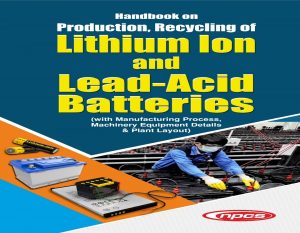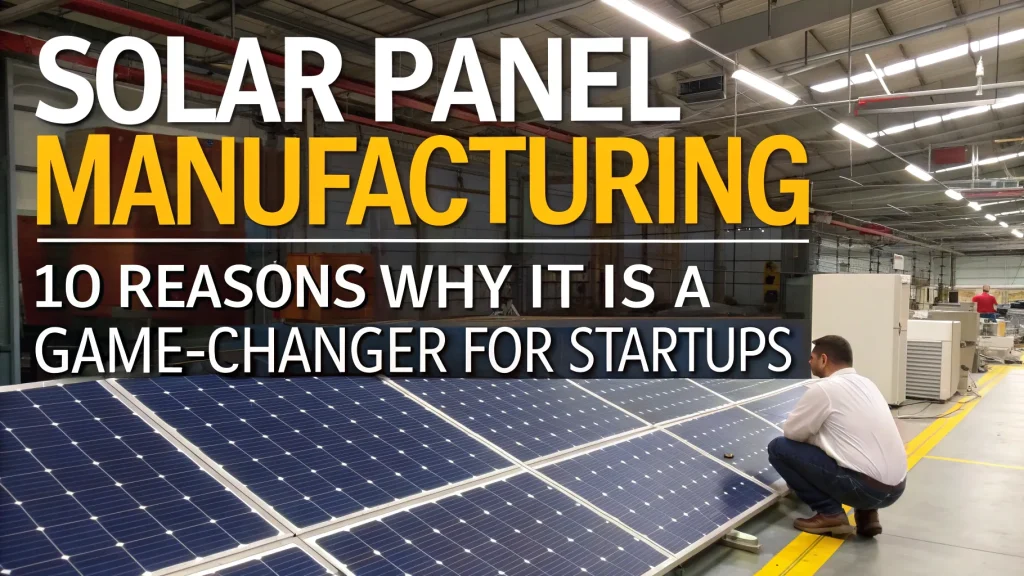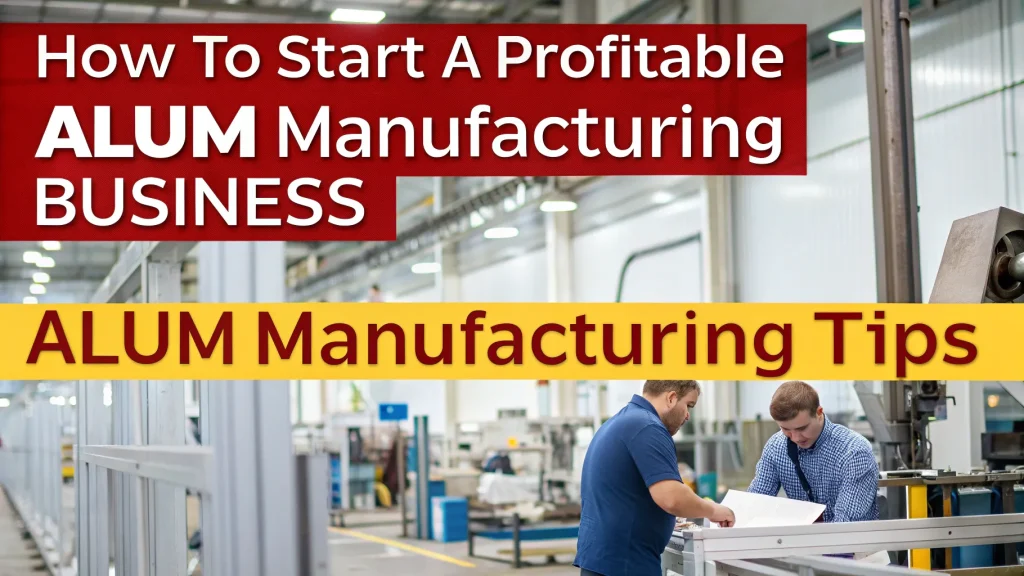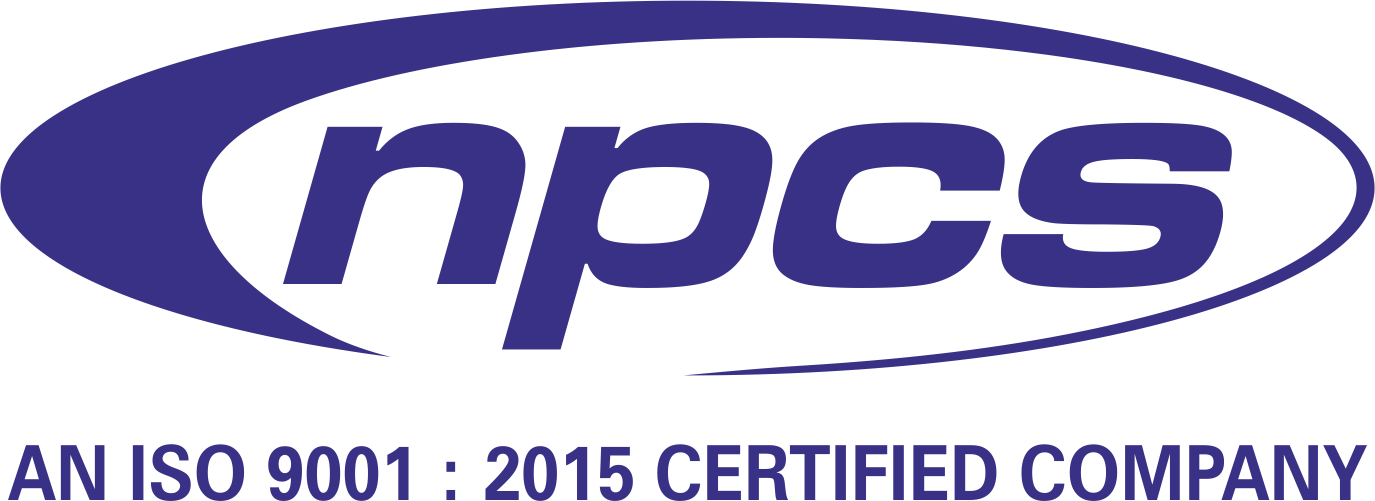
The global energy landscape is rapidly transforming, and battery manufacturing is at the heart of this evolution. Among all types of batteries, Lithium-Ion and Lead-Acid batteries dominate the market, fueling everything from electric vehicles to renewable energy storage and UPS systems. The rise in demand for efficient energy storage solutions has made battery manufacturing a lucrative and future-ready business opportunity for investors, entrepreneurs, and industrialists.
Lithium-Ion battery manufacturing involves advanced materials and automation to ensure compact, lightweight, and high-capacity power sources, ideal for EVs and mobile electronics. On the other hand, Lead-Acid batteries remain indispensable for applications such as automotive starter batteries, inverters, forklifts, and backup systems. Both segments have their unique market demand, manufacturing requirements, and regulatory considerations, making this sector a strategic blend of innovation, sustainability, and scalability.
Understanding the Market Potential of Battery Manufacturing
In recent years, the global battery industry has experienced explosive growth, especially with the surge in electric vehicle (EV) adoption, renewable energy expansion, and portable electronic devices. As governments push for green energy transitions, incentives, and bans on internal combustion engines, battery production is becoming a national priority in many countries.
Key Market Drivers:
-
EV Boom: The electric mobility wave is expected to drive Lithium-Ion battery demand to 3,000+ GWh by 2030.
-
Energy Storage Systems (ESS): Renewable energy integration requires scalable and efficient battery solutions.
-
Telecom and Backup Power: Industries and consumers increasingly rely on inverter and UPS systems, traditionally powered by Lead-Acid batteries.
-
Smart Devices and IoT: Lithium-Ion technology powers modern gadgets, from smartphones to drones.
India, with its Make-in-India initiative and support for battery manufacturing units, presents an excellent environment to invest in this growing sector.
Visit this Page for More Information: Start a Business in Lithium-Ion Battery Production
Types of Batteries and Their Industrial Applications
1. Lithium-Ion Batteries
These are rechargeable batteries with high energy density, lightweight design, and long cycle life. Applications include:
-
Electric vehicles (2W, 3W, 4W)
-
Consumer electronics (laptops, phones, wearables)
-
Solar and wind energy storage
-
Power tools and drones
2. Lead-Acid Batteries
These are time-tested, cost-effective, and reliable for:
-
Automotive starter batteries
-
Backup power (UPS and inverters)
-
Industrial equipment (forklifts, cranes)
-
Grid stabilization and emergency systems
Related Business Plan: Battery Projects
Step-by-Step Process of Battery Manufacturing
1. Lithium-Ion Battery Manufacturing Process
Raw Materials:
-
Cathode material: Lithium Cobalt Oxide (LCO), Lithium Iron Phosphate (LFP), or NMC
-
Anode material: Graphite
-
Electrolyte: Lithium salt in organic solvent
-
Separator: Polyethylene or polypropylene
-
Binder, conductive agents, and casing materials
Read Similar Articles: See Our Battery Projects
Manufacturing Steps:
-
Electrode Preparation: Mixing active material, binder, and solvent to form slurry. Coated onto metal foils and dried.
-
Cell Assembly: Stacked or wound electrodes with separators placed in casings.
-
Electrolyte Filling: Filling the cell with a precise amount of electrolyte.
-
Formation and Testing: Initial charging to activate materials, followed by performance testing.
-
Battery Packaging: Cylindrical, pouch, or prismatic cell types sealed for final use.
Automation, clean rooms, and strict environmental control are essential to ensure safety and quality.
Related Feasibility Study Reports: Battery Projects
2. Lead-Acid Battery Manufacturing Process
Raw Materials:
-
Lead alloy for plates
-
Dilute sulfuric acid (electrolyte)
-
Separators (PVC or polyethylene)
-
Battery containers and covers
Manufacturing Steps:
-
Grid Casting: Grids are formed using lead alloys.
-
Pasting: Active material is pasted onto grids.
-
Curing and Drying: Plates are dried and cured to strengthen material adhesion.
-
Formation: Initial charging in sulfuric acid bath to activate plates.
-
Battery Assembly: Plates inserted into containers, separators placed, electrolyte added.
-
Charging and Testing: Final charging followed by load, discharge, and quality tests.
Lead recycling and emission control systems are crucial due to the toxic nature of raw materials.
Read our Books Here: Read Our Books & Databases
Machinery and Equipment Required
For Lithium-Ion Batteries:
-
Electrode mixing and coating machines
-
Slitting and calendaring equipment
-
Pouch/cell winding and stacking units
-
Electrolyte filling stations
-
Vacuum drying ovens
-
Battery testing systems
-
Battery management system (BMS) integration
For Lead-Acid Batteries:
-
Grid casting machines
-
Plate pasting and curing ovens
-
Acid filling tanks
-
Welding and sealing machines
-
Formation tanks
-
Battery testing and grading systems
Investing in semi-automatic or fully automated lines enhances precision, safety, and output.
Click here to send your queries/Contact Us
Regulatory Compliance and Safety Standards
Battery manufacturing involves chemicals and electrical hazards. Thus, adhering to the following standards is critical:
-
ISO 9001 and ISO 14001 for quality and environmental management
-
BIS certification for Indian market compliance
-
Pollution Control Board clearance
-
Factory Act regulations for worker safety
-
International certifications (UL, CE, RoHS) for export viability
Advanced fire control, explosion-proof systems, and waste management infrastructure must be implemented to maintain operational safety.
Investment, ROI, and Profit Margins
Setting up a battery manufacturing plant requires significant capital, but returns are equally promising.
Estimated Costs:
-
Lithium-Ion plant (small-scale): ?3–5 crore
-
Lead-Acid battery plant (small-scale): ?1.5–2.5 crore
Operating Costs:
-
Raw materials, skilled labor, utility bills, maintenance, and licensing
Profit Margins:
-
Lithium-Ion: 20%–35%
-
Lead-Acid: 15%–25%
With a scalable model and consistent demand, ROI can be achieved in 2–3 years.
Opportunities for Expansion and Export
The government of India offers incentives under FAME II, PLI schemes, and State-level subsidies for setting up battery units. Export potential is strong in:
-
Southeast Asia
-
Africa
-
Middle East
-
European Union (with compliance certifications)
Diversifying into Battery Pack Assembly, Battery Recycling, and Energy Storage Systems (ESS) can further multiply business revenue.
Environmental and Sustainability Considerations
Sustainable manufacturing practices are no longer optional. Here’s how you can align:
-
Recycle lead from old batteries using eco-friendly methods
-
Use water-based binders for lithium-ion battery slurry
-
Install solar panels for plant operations
-
Dispose of chemical waste responsibly
-
Incorporate green logistics and carbon-neutral practices
Consumers and international partners increasingly prefer environmentally conscious brands.
Conclusion: Powering the Future with Battery Manufacturing
The battery manufacturing business, particularly in Lithium-Ion and Lead-Acid technologies, offers a high-growth, future-proof, and scalable venture for new-age entrepreneurs. With growing energy demands, e-mobility trends, and green mandates, entering this sector now can establish a strong industrial foothold for decades to come. From energy independence to circular economy participation, the benefits are immense. A well-planned unit with the right technical, financial, and regulatory groundwork can yield consistent profits and contribute meaningfully to the world’s clean energy future.
See More Links:
- Start a Business in Asia
- Start a Business in Potential Countries for Doing Business
- Best Industry for Doing Business
- Business Ideas with Low, Medium & High Investment
- Looking for Most Demandable Business Ideas for Startups
- Startup Consulting Services
- Start a Business in Africa
- Start a Business in India
- Start a Business in Middle East
- Related Videos
- Related Books
- Related Projects
- Related Market Research Reports





